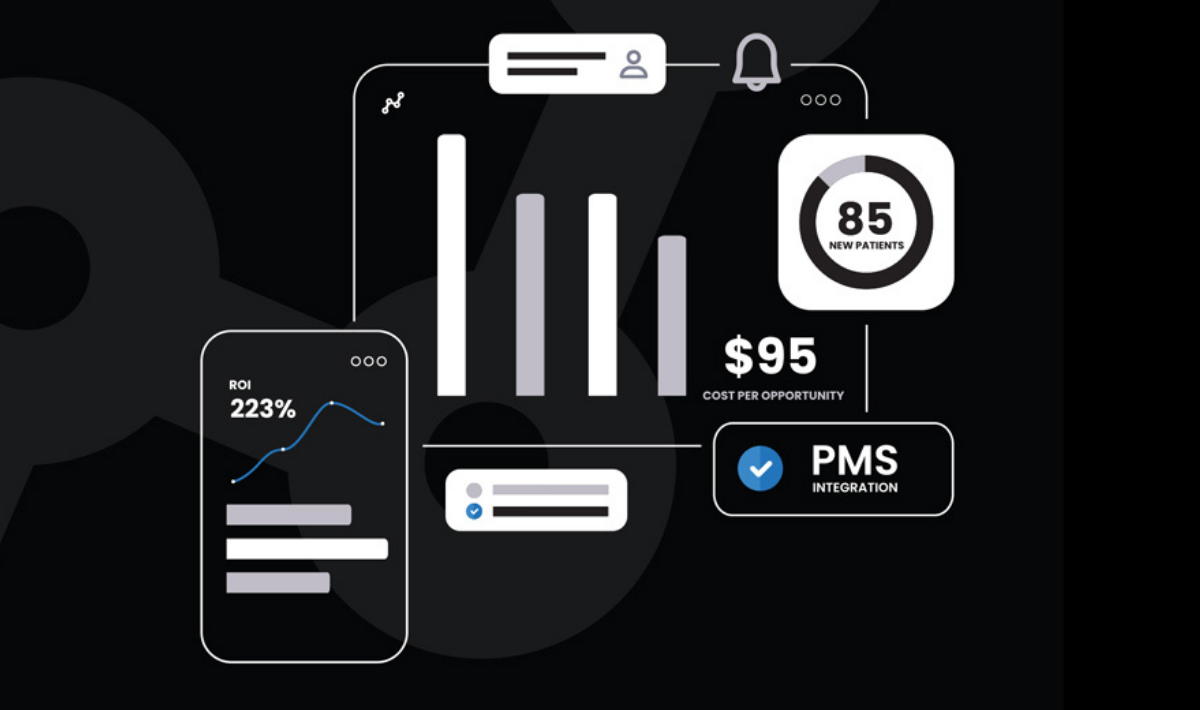With the right marketing technology in place, you’ll know exactly what’s driving your success.
By Gary Bird, CEO, SMC National
The number one topic on every businessperson’s mind is, what is this economy going to do? Is the economy going to dip and get far worse than it is right now? Is the economy going to improve? Or will the economy remain steady in the direction that we’ve been going?
Obviously, if you’ve been in business for any amount of time, you are preparing for the worst and hoping for the best.
Tools for the future
One of the things that you can do to prepare for the future is to invest in your technology and infrastructure for the marketing of your DSO.
Most dental offices have marketing assets and structure but usually don’t know what their marketing is producing. It’s just a guessing game. The average dental office just takes their total marketing budget and divides it by the total number of new patients that they get and say, ‘That’s our cost per acquisition.’
The problem is, that won’t give you an accurate picture of your marketing results. You’re mixing in patient referrals, doctor referrals, and drive-bys with the marketing patients. With all those additional variables, you won’t actually know what your digital marketing is producing for you.
It’s critical to invest in a technology infrastructure that will be able to tell you:
- How much it costs you to create an opportunity
- How much it costs you to drive that opportunity through the door
When you have these two numbers, you’re truly able to drive marketing. And if the economy was to take a massive dip, you would be able to know how much it’s going to cost you to fill the gap of what you potentially lose from a revenue standpoint or from a marketing standpoint.
ROI
Now, the other thing that your technology needs to be able to tell you is what’s your return on investment? You should be able to see what your ROI (return-on-investment) and LTV (life-time-value) are for all your digital marketing. However, if you’re aggregating all your new patient data together, and you’re mixing in patient referrals with your marketing, you’re not going to be able to understand what’s driving your marketing success, and you’re going to continue to blindly throw marketing dollars away into the wind because it looks like your ROI and LTV is winning, but in fact you are no idea.
That might be okay short-term. But look at what happened to the economy during the early days of the pandemic. After the shutdowns and shelter-in-place mandates were lifted, dental offices were left with empty chairs and open calendars.
There were a lot of offices that threw marketing money at the problem, and nothing happened. The reason nothing happened was because they had no infrastructure built for their marketing. They had no idea what was providing results and what wasn’t. And when they went to turn that engine on, it wasn’t there for them.
At SMC, we track and measure each step of your new patient journey, then improve any aspect that needs fixing. Here are five areas you should monitor in order to boost your marketing ROI.
1. Business operations
The first step to improving your marketing process doesn’t involve your marketing process. Poorly run operations can be a huge turn-off to patients. Perhaps your schedulers, marketing team, and hygienists are not communicating with each other about how many patients the latter group can handle. You’ll end up overbooking and you’ll quickly end up with a bunch of frustrated former patients, bad Google reviews, and a burned-out staff.
2. Unanswered calls
Talk about low-hanging fruit. The average dental practice simply doesn’t answer 35% of all phone calls, which means you’re probably leaving a lot of business on the table. By tracking your unanswered call rate and then putting systems in place to drive that number downward, you may end up increasing your pool of new patient leads by almost 50%.
3. Marketing phone conversions
Of the marketing phone calls that practices do answer, they only convert an average of only 50%. That means that every time a new patient lead picks up the phone to call you, your total chance of booking them could be less than half. Once you’ve got a system to make sure that all your calls get answered, you may need to go further. If your call team isn’t converting at least 80%, they need more tools to help them move leads from no or maybe to yes.
4. Marketing no-shows
About 25% of marketing patients make an initial appointment and then don’t show up. But there’s a lot you can do to bring more scheduled appointments into your waiting room. Coaching can help, as can implementing reminder systems like emails, texts, or a phone call 24 hours before a new patient appointment. Availability within 72 hours of the new patient call is your best bet to decrease your marketing patient no show rate. Keep a close eye on your no-show rate.
5. Recare rate
Once you’ve done that initial exam and cleaning on a new patient, do they come back again in 6 months for their next hygiene appointment? For too many dentists, the answer is no. The average recare rate is only 30% for marketing patients (We know you think it’s higher, but it’s not. Your organizational recare rate is not a practical benchmark for your marketing recare rate. You must track marketing alone.)
That’s shockingly low, especially considering how much time and money you’ve spent getting that initial new patient appointment scheduled. So track your recare rate religiously.
The best strategy for DSOs both now and in the future is get invest in technology that can track your cost per lead, cost per acquisition, ROI and your lifetime value. With those data points in place, you will see what’s coming from your marketing – not from what’s coming from ALL new patients, or what’s coming for all of your patients – but from your marketing.
If you don’t want to optimize your marketing alone, we’d love to help. Visit SMCnational.com to learn more.






